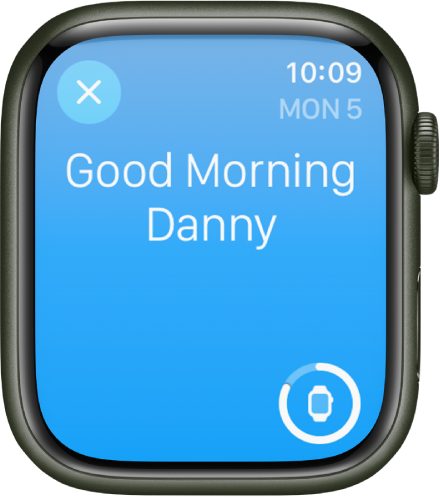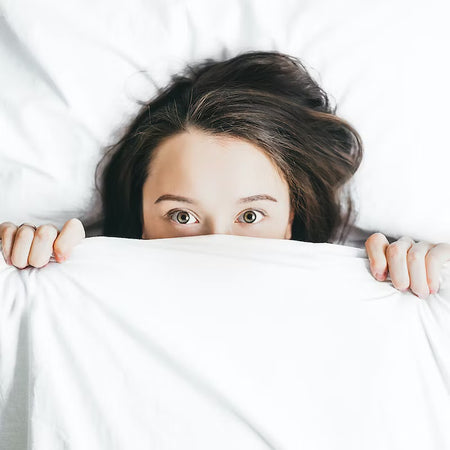Hello again!
Welcome again (for the 3rd time!) to our Blog Series dedicated to improving your lifestyle and health with Apple Watch. If you would like to know how to measure your HRV or how to support your women’s menstrual cycle go and check out our previous posts!
In this exciting new blog, we're delving into the fascinating realm of discovering your sleep with the Apple Watch. If you've ever wondered how your Apple Watch can help you achieve better rest, stay tuned for an insightful journey ahead.

Sleep Cycle - What Is It?
During a standard night's rest, an individual experiences approximately four to six sleep cycles. These sleep cycles can vary in duration as they’re personal to each individual but typically average around 90 minutes each.

There are four sleep stages, including one for rapid eye movement (REM) sleep and three for non-REM (NREM) sleep. These stages have been determined based on an analysis of brain activity during sleep. Thanks to that we can predict sleep patterns!
- Stage 1 - 1-7 minutes - A person first falls asleep, that’s why it’s so short. During this stage, the body hasn't completely relaxed, but both body and brain activities begin to decelerate, occasionally punctuated by brief movements. In this stage, it is easy for people to awaken, but in the absence of disturbances, they can swiftly progress into stage 2.
- Stage 2 - 10-25 minutes - The body transitions into a more subdued state marked by a decrease in temperature, relaxed muscles, and a deceleration in both breathing and heart rate. Brainwave patterns exhibit a novel configuration, while eye movement ceases. Although there is an overall reduction in brain activity, sporadic bursts of activity serve to fortify resistance against external disruptions.
- Stage 3 - 20-40 minutes - In this stage, muscle tone, heart rate, and breathing slow down, furthering the body's relaxation. The distinctive feature of this stage is the presence of delta waves in brain activity, which also leads to its alternative names, "delta sleep" or "slow-wave sleep” (SWS).
- Stage 4 (REM) - 10-60 minutes - REM sleep is believed to play a crucial role in cognitive functions such as memory, learning, and creativity. It's particularly renowned for hosting the most vivid dreams, attributed to the notable surge in brain activity. While dreams can occur in any sleep stage, they are less frequent and intense during non-REM (NREM) phases.
During REM sleep, brain activity intensifies, reaching levels comparable to wakefulness. Simultaneously, the body undergoes a state of atonia, a temporary muscular paralysis, except in two areas: the eyes and the respiratory muscles. Although the eyes remain closed, they exhibit rapid movement, giving rise to the name "rapid eye movement" (REM) sleep.
Deep sleep which helps us recover our body and cells happens in the very early part of the night. REM sleep, on the other hand, recovers our minds and it happens later in the night. Going to bed early is key to getting a good deep sleep and full recovery.
What Affects Sleep Stages?
Understanding what affects these sleep stages is crucial for achieving a more restful night's sleep as these factors can vary significantly from one individual to another.
- Age: With age, we tend to spend less time in REM sleep.
- Sleep patterns: Irregular or insufficient sleep over days or more, can cause an abnormal sleep cycle.
- Alcohol, Caffeine and Nicotine: Alcohol decreases REM sleep early in the night, but as the alcohol wears off, there is a REM sleep rebound, with prolonged REM stages. Using alcohol or caffeine within 4 hours of bedtime use was the 2nd factor driving reduced sleep quality.
- Sleep disorders: Sleep apnea, restless legs syndrome (RLS), and other conditions that cause multiple awakenings may interrupt a healthy sleep cycle.
- Medications: Antidepressants, antihistamines, and some blood pressure medications.
- Mental health issues: Depression or anxiety is one of the mental health problems which is affecting our daily activities and night sleep cycle.
- Neurological conditions: Parkinson's disease and Alzheimer's disease can reduce REM and deep sleep.

Track your sleep with Apple
Using the Sleep app on your Apple Watch, you can create your sleep schedules that assist you in achieving your sleep objectives. By wearing your watch to bed, the Apple Watch can provide estimates regarding the duration you spend in various sleep stages, including REM, Core, and Deep sleep, and it can also identify potential wake-up times. Upon waking, simply access the Sleep app to discover your total sleep duration and observe your sleep patterns over the previous two weeks.


You can create, for example, one for weekdays and another for weekends. For each schedule, you can set up the following:
- A sleep goal
- Set up an alarm
- A sound & vibrations to wake you up
- Sleep tracking
- The Sleep Focus, which limits distractions before you go to bed and protects your sleep after you’re in bed
Did you know?
The average Apple Watch user gets 49 mins of deep sleep per night—about 13% of total sleep time. From a basic calculation, we can say that most people aren’t getting enough sleep! An average sleep cycle lasts around 90 minutes. To feel fresh and relaxed, we should have four to six cycles of sleep every 24 hours. If we sleep 7-8 hours, we should spend 105-120 minutes in our deepest sleep.
Apple's sleep tracking feature captures the duration of your sleep, monitors the instances of nocturnal awakenings, tracks your heart rate and calorie expenditure, and logs your time spent in bed. Additionally, it compiles sleep time averages over various timeframes, including weekly, monthly, and every six months, all of which are determined by your movement patterns while in Sleep mode.
Tailored to your timetable, your device will autonomously activate Sleep mode, reducing disturbances before bedtime and safeguarding your uninterrupted rest. Apple Watches go a step further by monitoring your breathing rate during slumber, ensuring a vigilant eye on your respiratory well-being.

Pro-tip
Before tracking your sleep with the Apple Watch, create a plan or routine for when you will charge your watch. You can either do it before bed or right after waking up. The best would be supplying yourself with a Base Station Hub for the Apple Watch with wireless charging which will help you to take care of the battery of your device!Start your morning with an insightful welcome message, followed by a detailed analysis of your overnight sleep, allowing you to compare it with the rest of your week's rest patterns. You can easily check the duration and specific sleep stages from the previous night and review your sleep averages spanning the past fortnight. To access more extensive statistics, such as weekly long-term averages or insights into your heart rate variations during the night, simply access this data on your paired iPhone.
Hope to see you soon…
As we conclude this insightful exploration into the world of sleep tracking with Apple Watch, we hope you're now equipped with a deeper understanding of how this remarkable technology can enhance your sleep quality.
From monitoring sleep stages and heart rate fluctuations to providing you with invaluable insights into your rest patterns, your Apple Watch is a valuable companion in your quest for better sleep and a healthier lifestyle.
So, go ahead and enjoy a night full of restful slumber and delightful dreams. Remember to join us once more for the next and final blog of our health series, where we'll unveil more exciting ways to improve your lifestyle and well-being.
Good night and sweet dreams!



